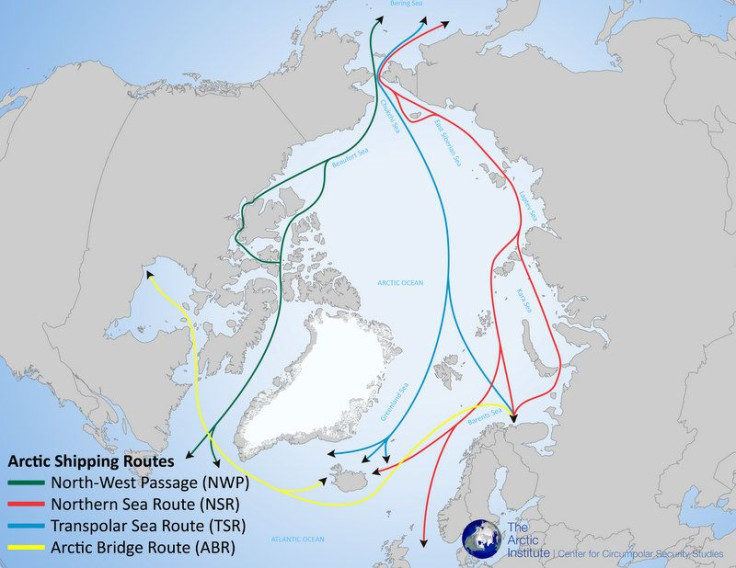The Future Of The Navy: Chief Of Naval Operations Pinpoints Underwater Drones And The Opening Of Arctic Sea Routes As Main Concerns In 2014

In discussing the U.S. Navy's priorities for this year, Admiral Jonathan Greenert said in an interview with U-T San Diego that the problem of sexual assault will be a main, overarching concern, but that he will also be looking to advance the Navy’s unmanned technology and harness the shipping value of the previously unnavigable Arctic routes.
In 2014 the Navy will lay out a roadmap for the future of unmanned technology. They have tested a number of underwater drones, such as the Slocum Glider, which does not require fuel, and the XFC drone, which is released inside a canister to the surface and then remotely launched from there. This technology will enable the Navy to target underwater surveillance more specifically and, more importantly (given government cutbacks) a lot more cheaply. “We can’t be everywhere in the world we want to be with submarines. They are almost $2 billion a copy," Greenert said. "We can get the intelligence, surveillance and reconnaissance of the under ocean with something that costs tens of millions.”
This fall the Navy expects to launch an unmanned helicopter in the San Diego area. To date, unmanned aerial technology has advanced much quicker than its underwater cousins. The reason for this, says Greenert, is because of the issue of powering it underwater for long periods. “Flying in the air with an unmanned vehicle, frankly it’s easier than sending something underwater. When you are underwater, you have to depend on a battery or some other fuel cell. Battery technology in the United States has not been on the cutting edge,” Greenert said.
While advancements in electromagnetic technology were widely discussed as the Navy looks to take advantage of the technology that consumers use to open garages and operate household items, the issue of naval cutbacks was widely avoided by Greenert. But when pressed, he did say: "I would not like to go down to 10. But we have also a fiscal house to put in order and a budget to put together that we are not done with," Greenert said.

Arguably, the opening of the Arctic sea routes is one of the most important issues the Navy has had to deal with in recent years and an alleged indicator of global warming. However, Greenert said he was in no rush to add another domain to the U.S. Navy’s already very stretched fleet, but he admits that it will likely be a domain of significance in the coming years. The Arctic sea melt opens up alternative routes for shipping from the East Coast of the United States to China rather than taking the incredibly long routes through the Mediterranean to the Suez Canal and onwards to China. Instead, convoys would be able to go up through the Arctic Ocean through the Bearing Straits and around to China past Russia. The new route is more cost-effective and will save the Navy and shipping companies on fuel. It also potentially opens up uncharted oil fields in the region.
“We have a working group with China and with Russia and the Scandinavian countries. And there’s an Arctic Council. Part of our job is to ensure freedom of navigation. We’ll sort all that out and decide what’s the level of combatant ship presence that we need,” Greenert said.
© Copyright IBTimes 2024. All rights reserved.





















